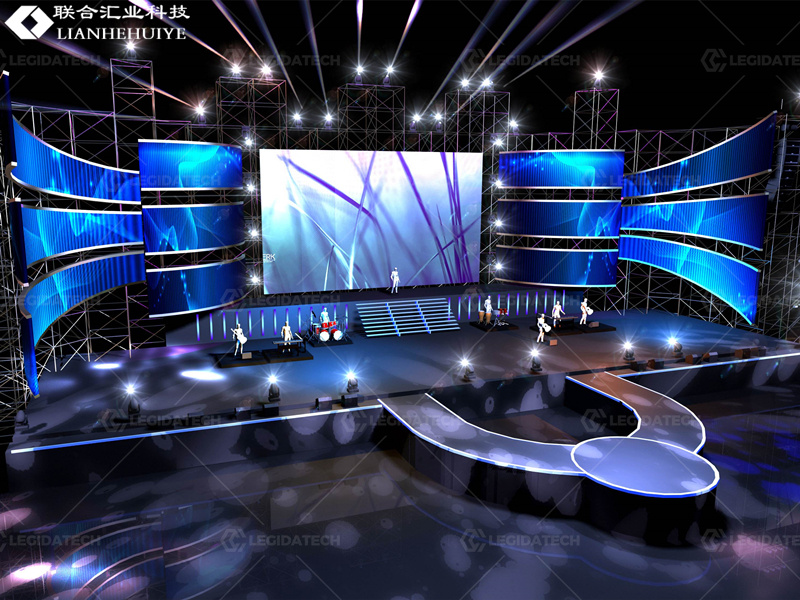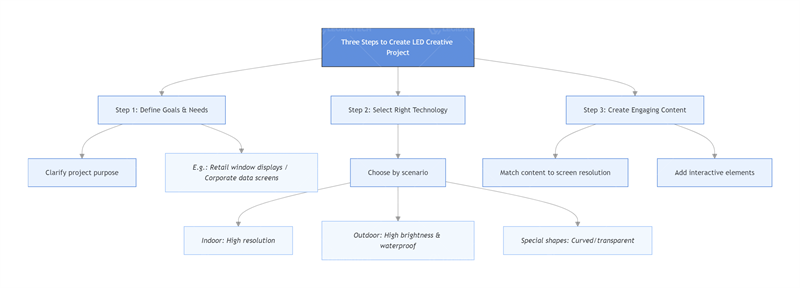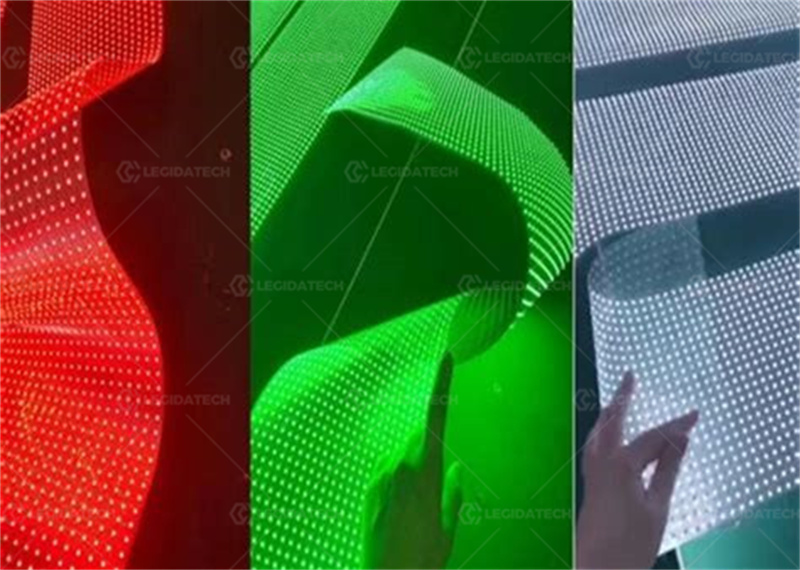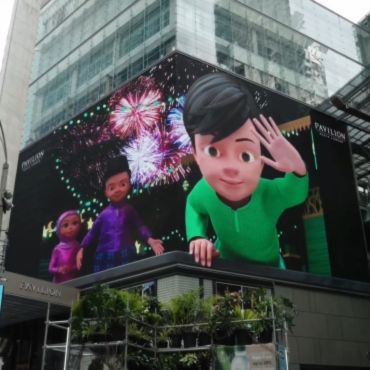In today’s digital landscape, as a purchasing decision-maker, you’re likely seeking technologies that truly captivate audiences, enhance experiences, and deliver tangible returns.
LED walls have far surpassed their roles as mere “billboards” or “stage backdrops.” They are evolving into versatile tools that are reshaping spaces, industries, and even urban landscapes.
This guide will showcase how LED screens unlock potential across indoor, outdoor, and stage scenarios, while helping you identify solutions tailored to your business needs.
Outdoor LED Screens: Durability and Impact in Public Spaces
Outdoor advertising and public installations require displays that withstand harsh conditions while commanding attention. Modern outdoor LED solutions excel in:
Weatherproof Innovation: Outdoor waterproof LED screens and full-color digital sign boards are engineered to resist rain, wind, and UV rays, suitable for billboards, stadiums, and urban landmarks.
Dynamic Engagement: Outdoor digital sign boards and large LED screens paired with motion sensors or real-time data feeds can display personalized ads, traffic updates, or live events, transforming passive viewers into active participants.
Localized Solutions: Regional suppliers offer tailored setups, such as solar-powered screens for off-grid locations, ensuring geographic relevance.

Stage and Event Rentals: Immersive Technology for Unforgettable Performances
The events industry thrives on creating immersive experiences, and LED screens are at its core:
Modular Rental Systems: Rental LED video walls and stage LED screen rentals provide cost-effective solutions for weddings, concerts, and trade shows, with quick setup and customizable sizes.
XR Stages and Virtual Production:XR stages and virtual production studios use LED walls to seamlessly merge live performers with digital environments.This technology is increasingly popular across film production, game development, and live concert experiences.
Themed & Interactive Setups:
For events like weddings or cultural celebrations, customized LED stage backdrops and interactive dance floors significantly boost guest involvement.These setups combine dynamic visual effects with smart lighting systems:
LED backgrounds integrate thematic elements like cultural patterns or wedding color schemes.
Interactive floors respond tomovement-shifting patterns, changing colors, or even triggering synchronized lighting displays-to create immersive environments.
This approach not only enhancesvisual appeal but also encouragesactive participation, making spaces feelvibrant and deeply connected to the event’s theme.

Three Steps to Craft Your LED Creative Project
Step 1: Define Objectives and Audience Needs
Clarify your project’s purpose: Are you aiming to drive foot traffic, create immersive experiences, or visualize data? For example:
Retailers may prioritize eye-catching window displays with transparent LED screens.
Corporate offices might focus on high-resolution conference room displays for data dashboards.
Step 2: Select the Right Technology
Budget and Environment: Choose specifications based on usage:
Indoor screens require low pixel pitch (high resolution) for close viewing.
Outdoor screens need high brightness, durability, and weather resistance (e.g., IP65 ratings).
Curved or flexible LED screens suit unique architectural designs.
Key Features: Prioritize pixel pitch, curvature, and light transmittance. Transparent LED panels, for instance, are ideal for museums to preserve views while showcasing digital art.
Step 3: Create Compelling Content
Resolution Matching: Ensure content aligns with screen resolution to avoid pixelation. Tools like Disguise servers enable real-time visual adjustments for different screen sizes.
Interactive Elements: Collaborate with designers to integrate motion-sensitive displays or synchronized light shows, enhancing audience interaction.

Technical Considerations for Buyers
Pixel Pitch: Lower values (e.g., P2, P3) mean higher resolution for indoor use; higher values (e.g., P10) suit large outdoor screens.
Energy Efficiency: Opt for low-power LED panels from eco-certified manufacturers.
Maintenance and Support: Solutions like LED screen repair and remote monitoring minimize downtime for 24/7 operations.
Strategic Sourcing: Choosing the Right Supplier
B2B Partnerships: Wholesale buyers can leverage LED display factories for bulk discounts on modular screens and custom configurations.
Local vs. Global Suppliers: Regional suppliers offer faster delivery and localized support, while global manufacturers provide cost-effective solutions for large-scale projects.
Transparent Quoting: Compare quotes for clarity on materials, installation, and ongoing support costs.
Future Trends
Micro LED and Transparent Displays: Transparent Micro LED screens and flexible LED films are redefining retail and architecture, enabling invisible LED integration with physical spaces.
5G and AI Integration: LED screens will soon sync with real-time data via 5G, allowing AI-driven content adjustments based on audience demographics or weather.

Conclusion: Empower Your Space with LED Technology
LED screens are no longer just displays—they’re strategic assets for engagement, efficiency, and brand visibility. Whether you’re a retailer, event planner, or corporate buyer, the right solution hinges on understanding your audience, environment, and goals.
At ledscreenfactory.com, we specialize in tailored LED solutions for indoor, outdoor, and stage applications, supported by global manufacturing expertise and local support. Ready to transform your space?
- Explore our range of LED display panels.
- Request a quote for custom projects.
- Contact our team to discuss how we can bring your vision to life.
Preguntas frecuentes
Q: What’s the cost of an LED screen project?
A: Costs vary widely: Small indoor panels start at 2,000, while large outdoor billboards can exceed 100,000.
Q: How long do LED screens last?
A: High-quality screens last 50,000–100,000 hours with proper maintenance.
Q: Can LED screens withstand extreme weather?
A: Yes, outdoor models with IP65+ ratings are designed for rain, heat, and cold.
Q: What’s the difference between pixel pitch and resolution?
A: Pixel pitch (distance between pixels) affects clarity at viewing distance; resolution is the total pixel count on the screen.
Author:Amy




